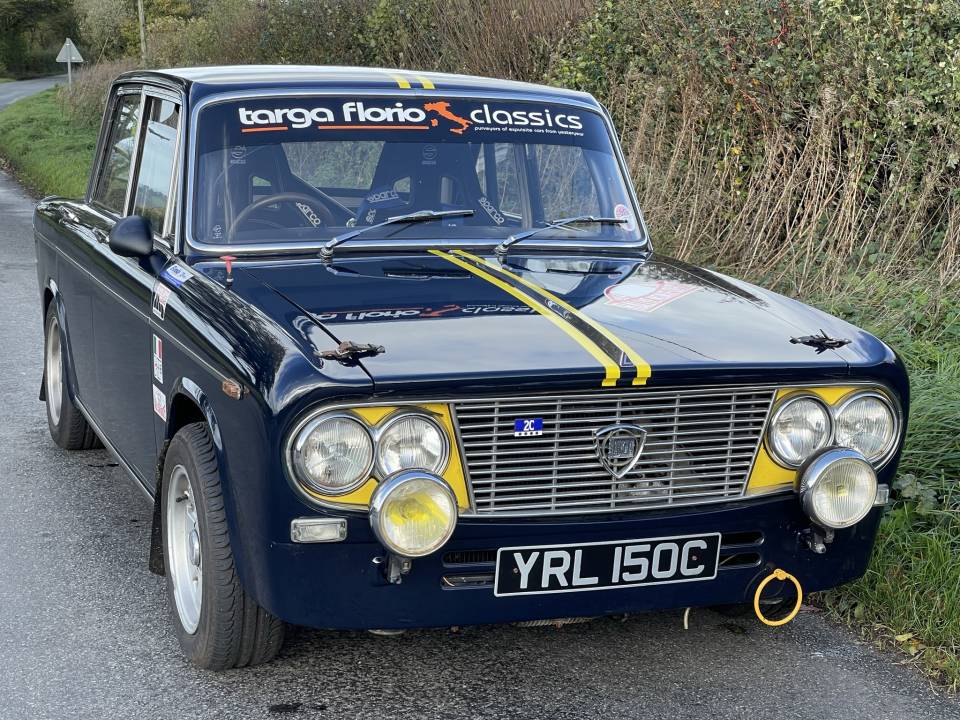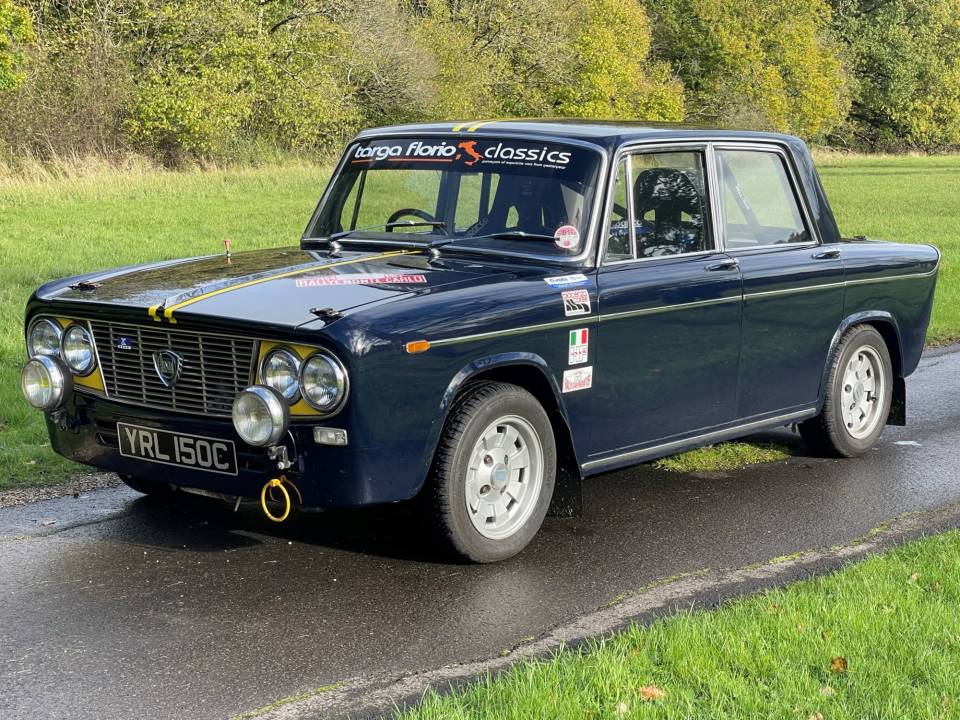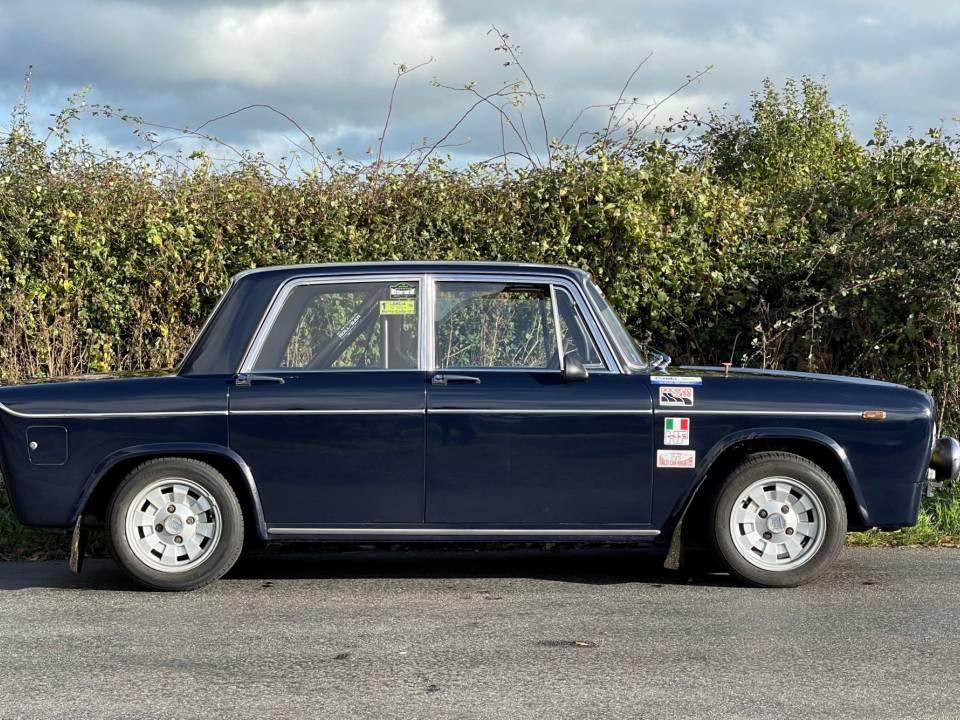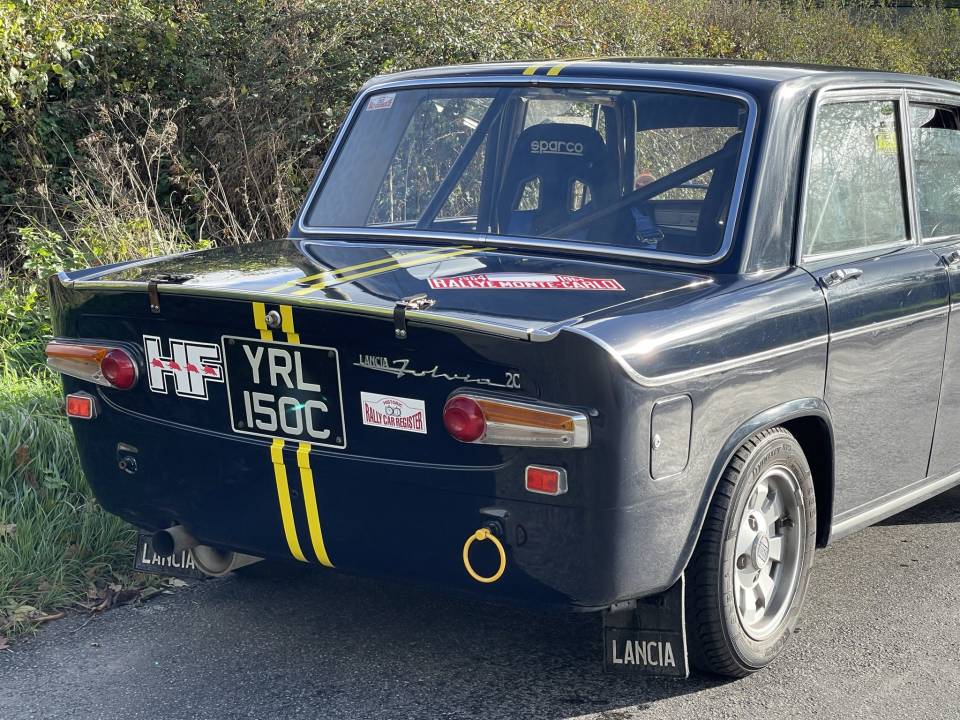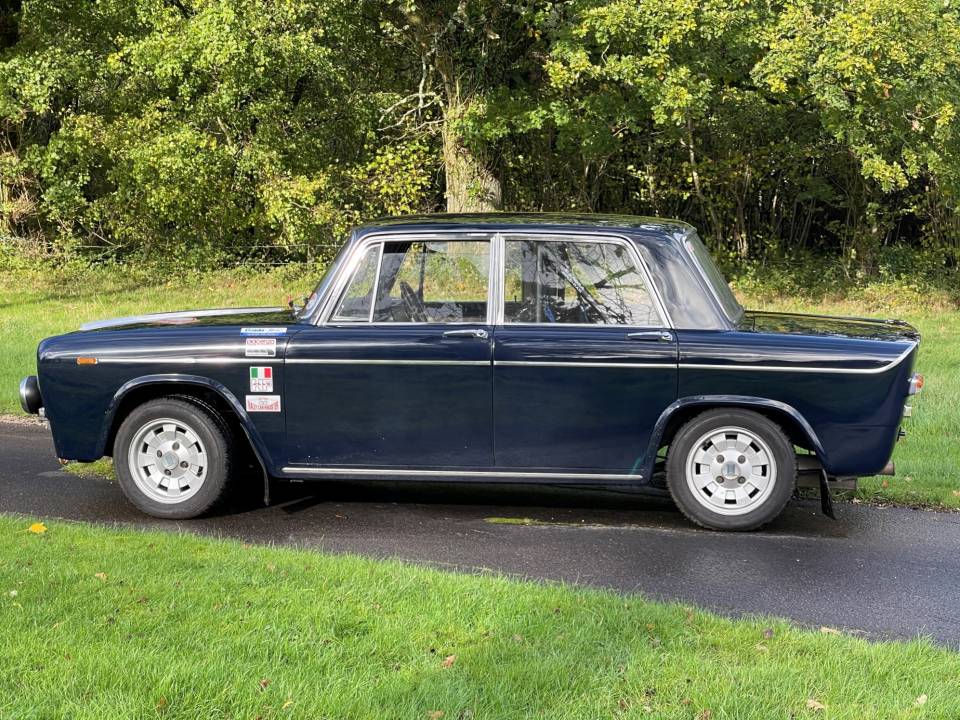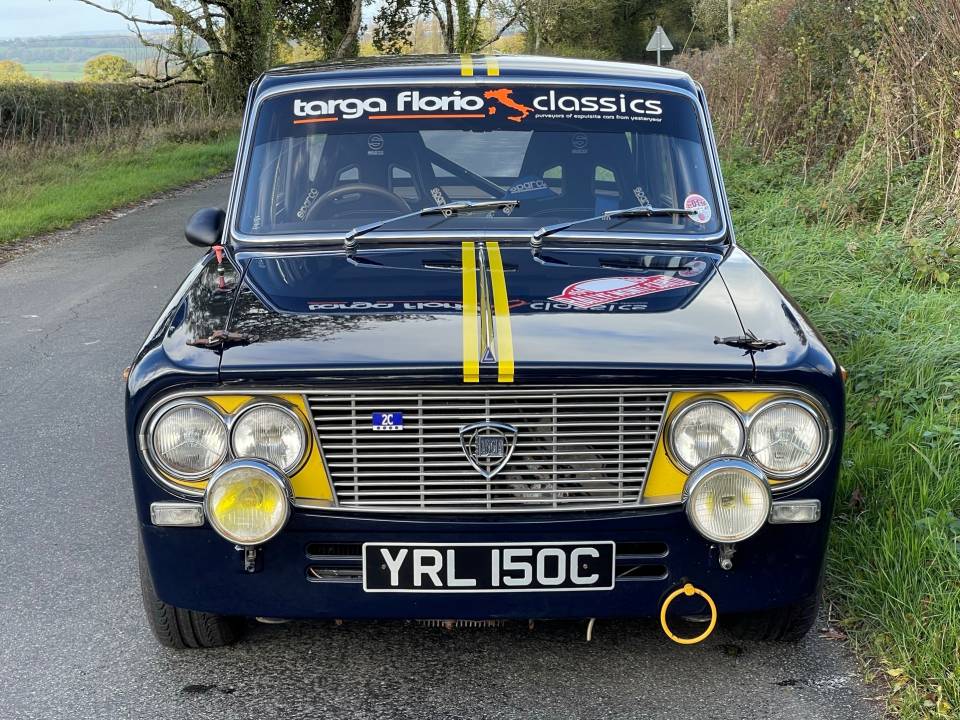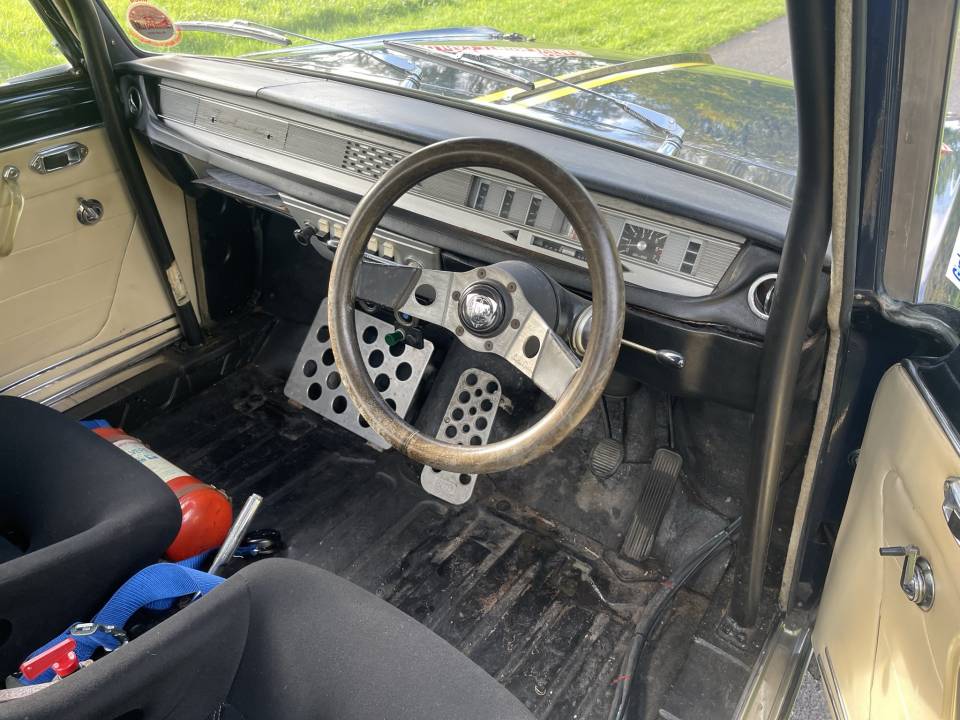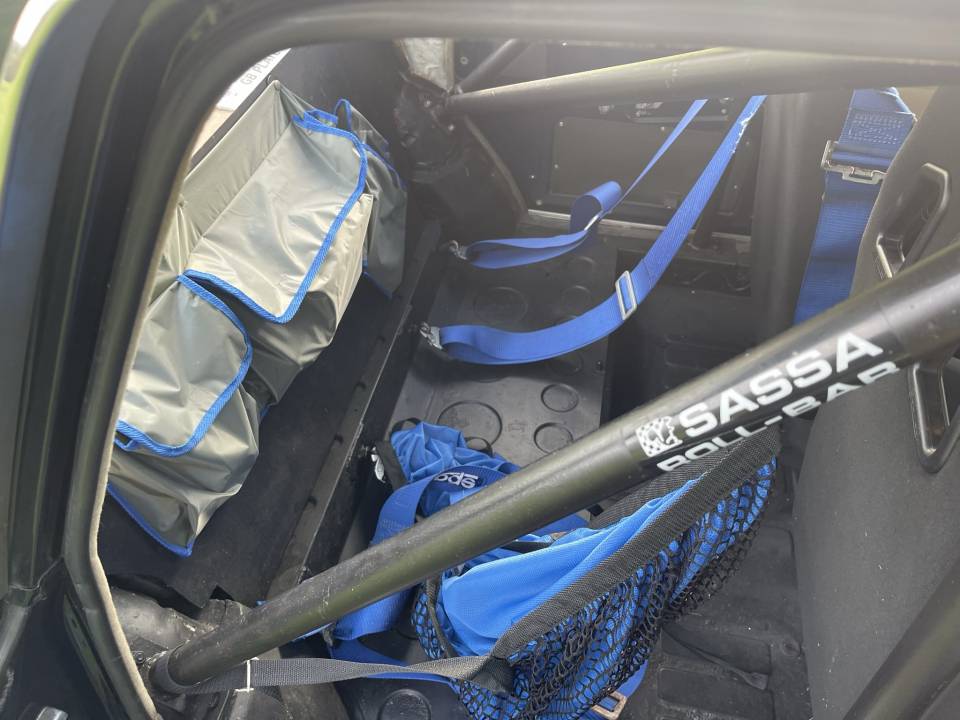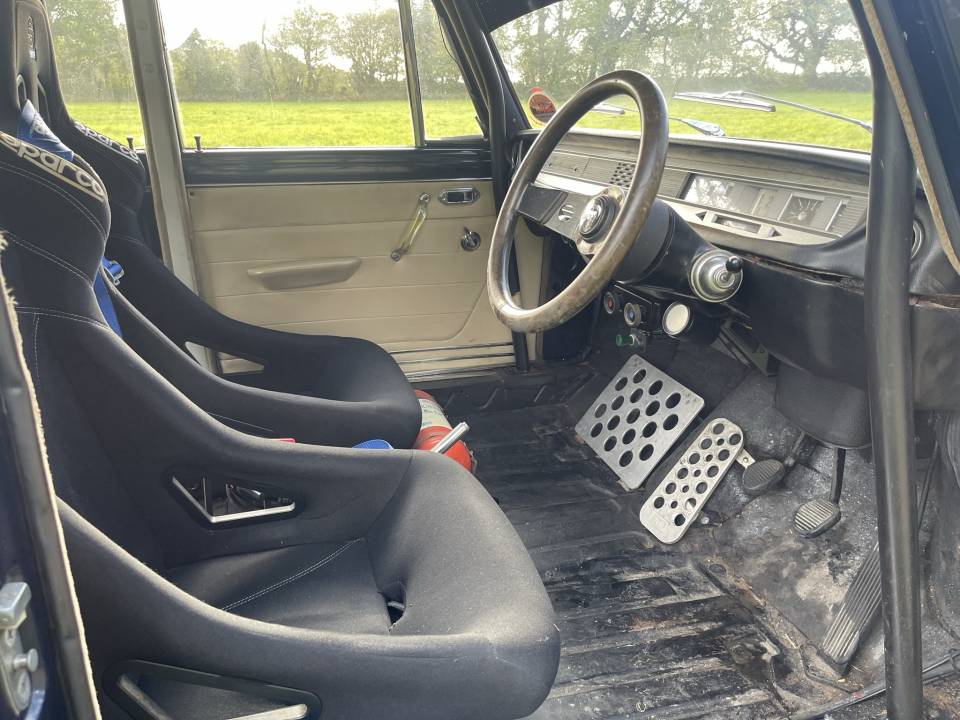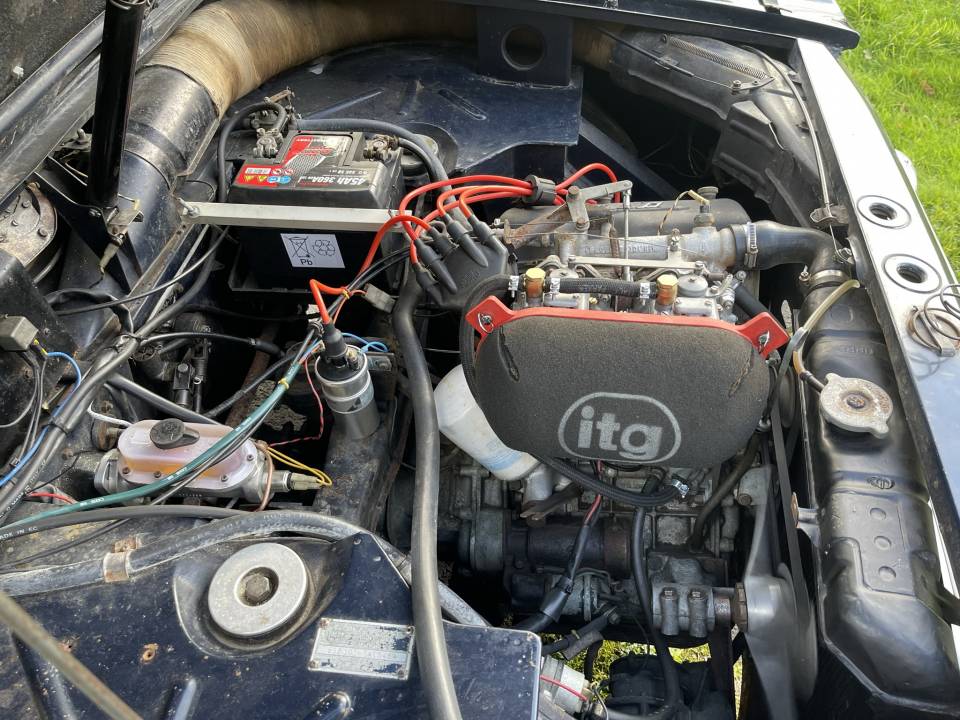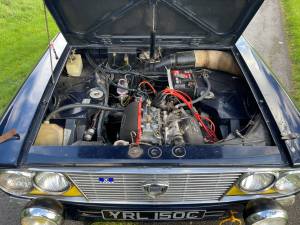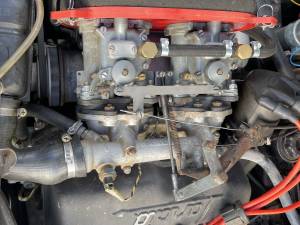1965 | Lancia Fulvia 2C
Lancia Fulvia Berlina 2C RHD
Lancia Fulvia Berlina 2C RHD
Lancia Fulvia Berlina 2C RHD
Beschreibung
The Lancia Fulvia was first shown at the 1963 Geneva Motor Show – the name following the Lancia tradition of referencing historic Roman roads (in this case the Via Fulvia, which runs from Tortona to Turin).
The Fulvia was a new front wheel drive design, with independent front suspension using wishbones and a single leaf spring, and a beam axle mounted on leaf springs with a Panhard rod at the rear. From inception, the car had disc brakes on all four wheels. The new model used a longitudinally mounted, narrow angle V4 engine, positioned in front of its transaxle. The engine had just 12° separation between the two banks of cylinders, permitting the use of a single a single cylinder head and was mounted at an angle of 45°. When launched, the engine was available in a single displacement of just 1091 cc.
The Fulvia was manufactured in three body styles – the Berlina, a 4-door saloon; a 2-door Coupé, and the Sport, a Zagato-designed fastback coupé. The model underwent a number of ‘Series’ developments over its life and production ran on until 1976.
This Fulvia Berlina 2C was first registered in Pavia in Northern Italy in March 1965 and was originally right hand drive. Being a 2C model, it had an uprated engine – still 1091 cc – but fitted with twin Solex carburettors and given a higher (9.0:1) compression ratio, to produce a claimed 70 bhp. We know little of its early history, other than it was taxed for road use up to 1970. Then in 1989 it was granted a CSAI (Commissione Sportiva Automobilistica Italiana) competition licence. At this point it had been converted for historic rallying and appears to have been built as an homage to the Lancia Fulvia works rally car that competed in 1964/65.
In 1990, the car was granted an FIA licence (Group F – Hist B), but we have not been able to trace any actual competition history for the vehicle.
Latterly, the Fulvia underwent some bodywork renovation by specialist classic car restorers (Corbellini Fratelli in Italy) and was imported to the UK in 2013, re-registered here and has since been in the hands of a single owner, with very little subsequent use – the vehicle being kept in storage.
The little V4 engine starts and runs reliably with a sporty note - a performance exhaust is fitted. The twin carburettors breathe through an ITG performance filter. The 4-speed gearbox uses a column change and takes a little getting accustomed to but works well. An FIA-approved ATL fuel cell and electric fuel pump have been fitted together with an FIA-approved battery cut off.
The suspension has been uprated with sports shock absorbers, which give a firm ride. The car has been fitted with 6x14 Cromodora alloy wheels, shod with 185/70 R14 Kleber tyres. The original Dunlop braking system is in place.
The body of the car was re-finished in Italy by classic car restorers Corbellini Fratelli prior to import, in an appropriate dark blue Lancia colour and it remains in very good order. There is no welding or repair work visible to the floor pans and the bodywork appears all original. Whilst much of the brightwork remains in place (and is in good condition), both front and rear bumpers have been removed in creating the rally replica. Towing hooks and 2 Cibie rally spotlights complete the competition fitments.
The car interior has been stripped out in making a functional rally recreation, with the exception of the original dashboard – with its rotating wheel speedometer and square rev counter - and front door cards. A substantial Sassa 6-point roll cage has been fitted together with Sparco Sprint seats and matching Sparco 4-point 3” harnesses (all FIA approved). Additional rally navigational equipment provided includes twin period stopwatches, a rally trip computer and a dash mounted compass. Aluminium footrests have been added for driver and navigator, as has a fire extinguisher. A rare Sandro Munari steering wheel has been fitted. The original seats are available with the car.
This Fulvia Berlina has been extensively and carefully modified to create a car ready to compete on the classic rally scene. The cabin in particular feels suitably spartan and purposeful, whilst the motor sounds just right and the car drives like a rally car should.
We believe this Berlina is the oldest right hand drive model known to the Lancia Motor Club to still be in existence worldwide. The car is currently located in Dorset and viewing may be arranged by appointment.
Fahrzeugdetails
Fahrzeugdaten
- Marke
- Lancia
- Modellreihe
- Fulvia
- Modell
- Fulvia 2C
- Erstzulassung
- 03.1965
- Baujahr
- 1965
- Tachostand (abgelesen)
- 70’219 km
- Fahrgestellnummer
- 818101 041543
- Motornummer
- 818100
- Getriebenummer
- Nicht angegeben
- Matching numbers
- Nein
- Anzahl Besitzer
- Nicht angegeben
Technische Details
- Karosserieform
- Limousine
- Leistung (kW/PS)
- 52/71
- Hubraum (cm³)
- 1091
- Zylinder
- 4
- Anzahl Türen
- 4
- Lenkung
- Rechts
- Getriebe
- Manuell
- Gänge
- 4
- Antrieb
- Front
- Bremse Front
- Scheibe
- Bremse Heck
- Scheibe
- Kraftstoff
- Benzin
Individuelle Konfiguration
- Außenfarbe
- Blau
- Herstellerfarbe
- Dark Blue
- Innenfarbe
- Schwarz
- Innenmaterial
- Andere
Zustand & Zulassung
- Gutachten vorhanden
- Nicht angegeben
- Zustand
- Zustandsbericht beauftragen
- Zugelassen
- Fahrbereit
Anfahrt

Le Riche Automobile Restorers (CI) Ltd.
Ian Le Riche
Rue de la Monnaie
JE3 5DG Jersey
🇬🇧 Vereinigtes Königreich
